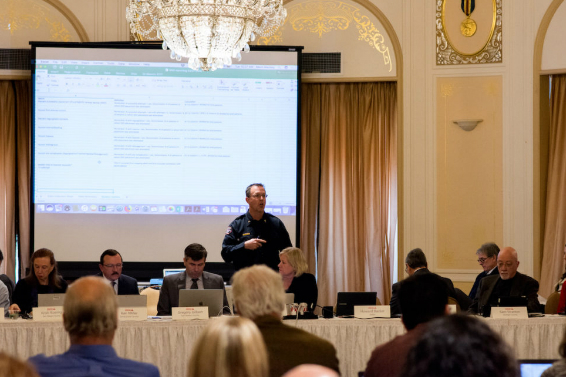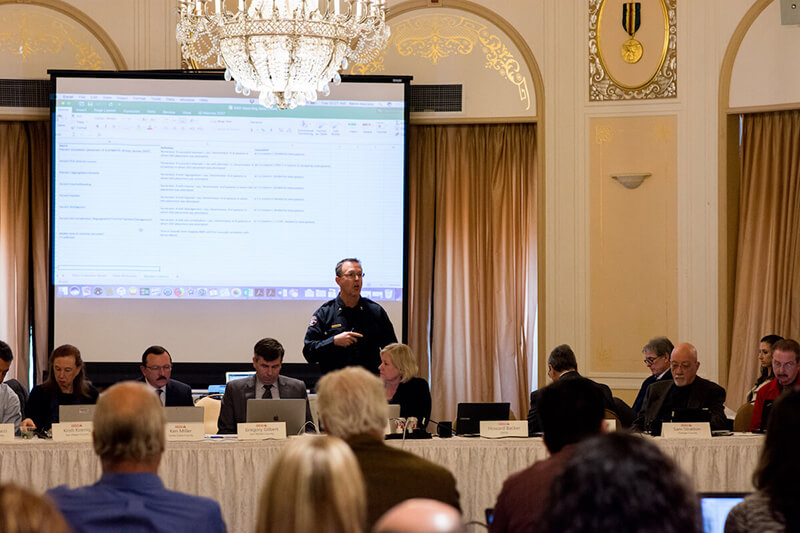December 5, 2017

The day started off with a rare, closed door meeting between the EMDAC and EMSAAC bodies, as state leadership looks to address the Flight Paramedic scope of practice in the wake of EMDAC’s decision to revoke pediatric intubation from paramedics last September. At that meeting, a presentation by San Diego Fire-Rescue Associate Medical Director Joelle Donofrio prompted the group to red line pediatric endotracheal intubation from the optional scope of practice for California Paramedics after voicing serious concerns in that Paramedics were not safely using the skill.
Medical Directors representing state aeromedical providers are now scrambling to create an exemption for their Flight Paramedics. They argue these teams, most often a Registered Nurse and Paramedic, must work dynamically in the treatment of pediatric patients, and that it is vital for paramedics to participate in the induction and intubation care often utilized in aeromedical cases. Interestingly, significant data of current pediatric intubation is being requested of all aeromedical providers as a part of the decision. This contrasts the decision to remove pediatric intubation which utilized historical studies but no current data.
A promising solution appears to be forming around the creation of a unified Critical Care Paramedic scope of practice. This scope would require additional training by providers, but would then give them additional skills such as pediatric ET intubation and potentially RSI. The scope would be identical in all LEMSAs, which is important for helicopter crews working in multiple jurisdictions. Aeromedical Directors are eager to establish this scope, as it would allow their Paramedics to retain lifesaving protocols. It remains unclear if EMDAC physicians will allow ground providers to utilize this new advanced scope. If allowed, it would afford Medical Directors, and their LEMSA providers, the opportunity to retain vital skills and also alleviate concerns of low training or data monitoring. It would also create a tiered mechanism by which the state could elevate education for Paramedics and better align it with the international community.
Dr. Kevin Mackey, the incoming EMDAC President, presented on perilaryngeal airways which will be introduced across the state in the absence of pediatric endotracheal intubation. LEMSAs will also be able to request the use these devices for adult patients as a rescue airway, the idea being providers would only have to train on one device instead of their current supraglottic device and the new device. A Resuscitation Outcomes Consortium study by Wang, et al., showed decreased survival in adult patients intubated with supraglottic airways compared to those endotracheally intubated. However, that study did not include pediatric patients.
EMDAC and EMSAAC plan to continue working on the new scope prior to their next quarterly session scheduled on March 20th, 2018 in Anaheim, CA. Paramedics and the public are welcome to attend the open meetings. Please contact us or visit emdac.org for more information.



